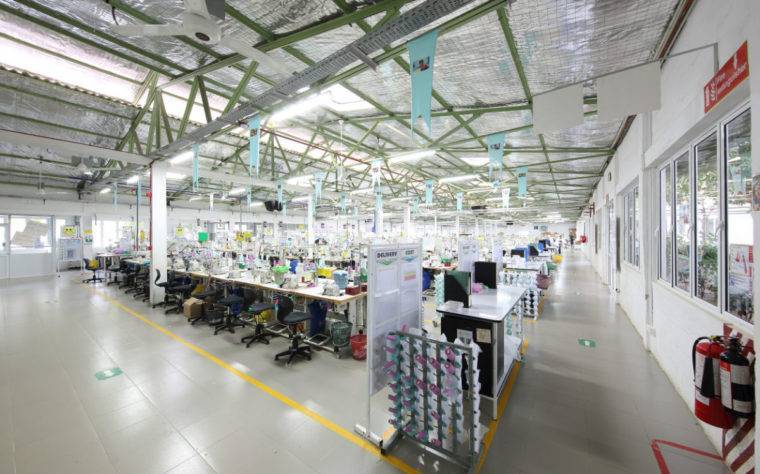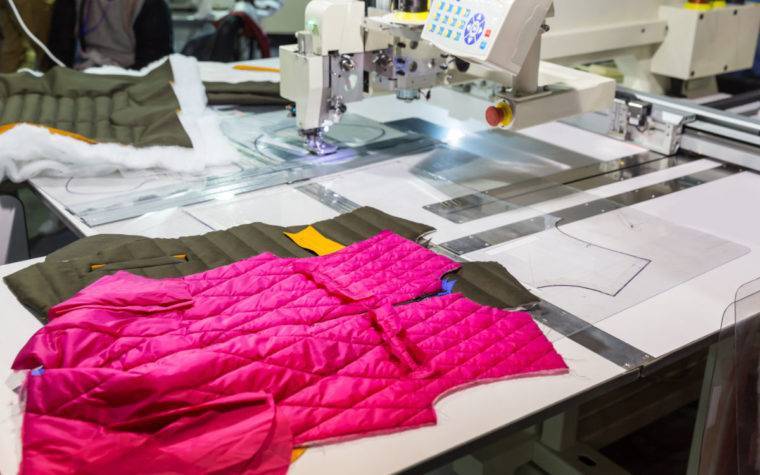Why the fashion supply chain must run on data
by Coats Digital
Brands have long accepted serious limitations on visibility into procurement and production. The last year has made the strongest case to date for breaking down those barriers – to brands’ and suppliers’ mutual benefit.
Much of the apparel and footwear supply chain is connected in name only. For every organisation that has close ties to its factories, mills, and suppliers, there are many, many more that operate at arm’s length, or with limited visibility into the true nature of their procurement and production processes.
But the last year has provided perhaps the clearest demonstrations to date of the need for brand-supplier connectivity and collaboration to be the rule, rather than the exception.
Most recently, the US ban on the importation of products incorporating cotton from China’s Xinjiang region has created a sudden imperative for detailed material provenance data that brands with disconnected supply chains found hard to access. During the first wave of COVID, communication breakdowns caused supply chain disruption on a historic scale (a recent US and UK survey suggests that 99% of all procurement and production was affected). And when the pandemic situation recently began to stabilise in many consumption markets, and the pace of orders picked up, brands and suppliers struggled to match demand with capacity – with logistics bottlenecks turning weeks-long waits into months.

While the inciting events for these headline disruptions were new, the challenges they exposed were not. A staggering 98% of supply chains, across industries, are facing problems with operational efficiency today, but more than 50% of all supply chains experienced disruption in the year prior to the pandemic as well, and in early 2020 – which feels a lifetime away today – non-economic supply chain shocks were already on the rise.
These may be global challenges – not specific to fashion – but the remote nature of apparel and footwear brands’ relationships with their suppliers makes the industry especially vulnerable to their effects. This creates not only a clear incentive for change, but also the potential for revolutionary results if that change takes hold.
Unpicking the fashion supply chain
Where other industries produce as close as possible to demand, with a symbiotic relationship between design and manufacturing, most segments of the fashion sector continue to operate on a batch production model, designing large volumes of products to cater to predicted consumer demand, then passing those to manufacturing partners to deliver.
Past the point of that handoff, where a style or collection is considered creatively complete and it becomes a purchase order for production, the brand commissioning that order reluctantly accepts that the level of visibility will be patchy at best until the production process is complete, and SKUs enter the distribution network.
Contrast this with an industry like automotive, where manufacturing is close to being an open book in which technical specifications directly feed production and where quality control is constant and live production updates the norm, and fashion’s factories, mills, and component suppliers begin to resemble black holes.

“Brands have invested considerable amounts of time and effort in improving in-house visibility, unifying every part of the design and development process with a single platform, but they then accept little or no insight into what happens during production, and can only identify problems at the point of QC.”
Rakhil Hirdaramani, Director of Manufacturing Pioneers,
“This is akin to settling for a post-mortem when earlier intervention could have kept the patient alive.”
Hirdaramani Group
But the factories themselves are not the sole source of this disconnect. The shift to offshore manufacturing, (even with recent moves back to on-shore / near shoring), has left many brands with little understanding of factory operations – or of the effects their design and development decisions have on them. And this lack of mutual understanding has given rise to a situation whereby manufacturers are contracted by multiple brands who each design and develop differently, with varying outputs that are not pegged to standards or achievability in production, so the factory defaults to using their own methods – often going as far as to re-engineer and recreate blocks and patterns to be manufacturable with the machinery and skills they have on hand.
This opaque window into production is also made even murkier by the heterogeneity of the average apparel supply chain. From the small artisan to the specialist material supplier, and from the technologically advanced production facility to the lower-tier trim supplier, the level of accountability, visibility, and digital connectivity from design to production varies dramatically.

Despite the differing nature of each individual sourcing network, fashion’s supply chains are, for the most part, made up of two ends working to improve, interpret, and innovate in isolation, and then attempting to meet in the middle. And the negative impacts of these disconnects are similarly stark: fabric utilisation, which typically makes up around 60% of a product’s cost is difficult to quantify; quality, colour accuracy, fit, and other KPIs can only be measured when it’s too late to change them; and the true, sustainable, labour cost associated with producing a garment is essentially invisible.
All of these gaps in visibility have outputs on which the performance and profitability of a brand or retailer is measured, and all are difficult – if not impossible – to control, because none of them can be directly monitored until the chance to influence them has passed. At the extreme end, this can lead to a crisis of reputation. In a more routine sense, it leads to endemic inefficiency – as well as undermining the brand’s ability to design to value / cost, or to help establish and enforce industry standards for sustainable production.
And this inefficiency is not one-sided: with no clear pathway for supply chain planning and allocating forecast and orders based on factory capability, capacity and material availability and no channel of collaboration to share real time updates, visibility is limited and factories can easily end up performing below expectations in terms of quality and speed, with the additional risk of compromising ethical and environmental standards.
The benefits of better visibility across the fashion supply chain
As complex as this problem is, the solution is comparatively simple: brands and their supply chain partners should collaborate in design and development, plan for value and sustainable manufacturers using industry standards, and then capture accurate data from the factory floor, at the machine and operation level, when production begins. And as it proceeds, both parties can then use that dataset to improve end to end supply chain performance. Rather than costly last minute changes ‘on the fly’ and waiting for production to complete, both parties can enjoy the benefits of a smoother production process with shared real time visibility.
For a brand, these kinds of near-time analytics could hold the keys to both managing short-term risk and planning future sourcing and production strategies. Day to day, capacity or production shortfalls can be identified – and orders rerouted – and rather than discovering that a particularly factory is overloaded afterwards, when a deadline or a quality standard is not met, limitations and deviations can be identified as they occur.
“Automating and digitizing business critical processes to drive real-time visibility is rapidly becoming a pre-requisite for an optimised, sustainable end-to-end fashion supply chain”
Gary Thompson, Senior Director of Strategic Partnerships and Alliances, Coats Digital
“With the growth in on-demand business models, fast, efficient planning and execution of production, with immediate and shared shopfloor data insights are crucial for improving transparency, agility and resilience, as well as driving continuous improvements in operational performance, profitability and sustainability. ”

For a manufacturer, optimising and digitizing existing processes for planning and executing production orders, with real time visibility of shop floor throughput and efficiency is critical, but by opening these insights to their customers, both parties could begin to measure performance against planned capacity, and to react in real-time to internal and external factors. And by sharing that information, manufacturers could also build further trust, expand their order books with key customers, and demonstrate critical sustainability credentials.
“Digital twins are becoming common in product design, development, and consumer-facing experiences, because they allow everyone to better understand the digital lives of products, and to test different scenarios, but what we need now is digital twins of our supply chains,” concludes Hirdaramani.
As 2020 and now 2021 have demonstrated, traditional supply chain relationships have been tested to their breaking point – and in some cases beyond. And as the world begins to reshape post-pandemic, brands will be seeking to reduce the risk of over-reliance on traditional bulk producing, while manufacturers will be looking to for business continuity, and for new tools that allow them to remain price-competitive without compromising on quality or sustainability credentials.
Both of these objectives have a mutual mid-point: shared visibility, and access to real-time insights, enabling the industry to react from design inception through to the point the fabric lands on the cutting machine and through the manufacturing process, rather than waiting until finished products reach the ports. Throughout 2021, The Interline and Coats Digital, with regular inputs from Res.Q will be examining how that that visibility can be achieved, and how it can be used to create a modern, mutually-beneficial and sustainable fashion supply chain.
About our partner: The Interline is an fashion technology news publication and community dedicated to fashion and retail technology. Designed and written by the fashion industry experts who created WhichPLM, The Interline is an independent initiative targeted at fashion industry professionals who are hungry for real editorial, opinion, and analysis that is completely devoted to fashion technology outside the scope of PLM.
All Blog Categories
- Supply Chain Solutions
- Corporate
- Design and Develop
- Fabric Optimisation
- Method Time Cost Optimisation
- Production Planning
- Shop floor execution
- Sustainability
- Videos
